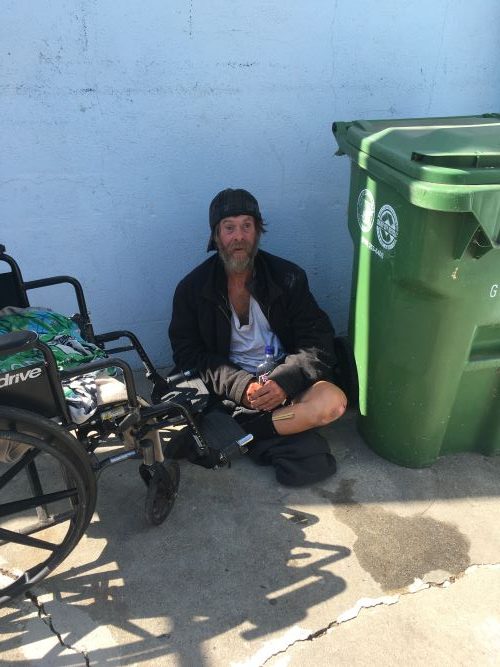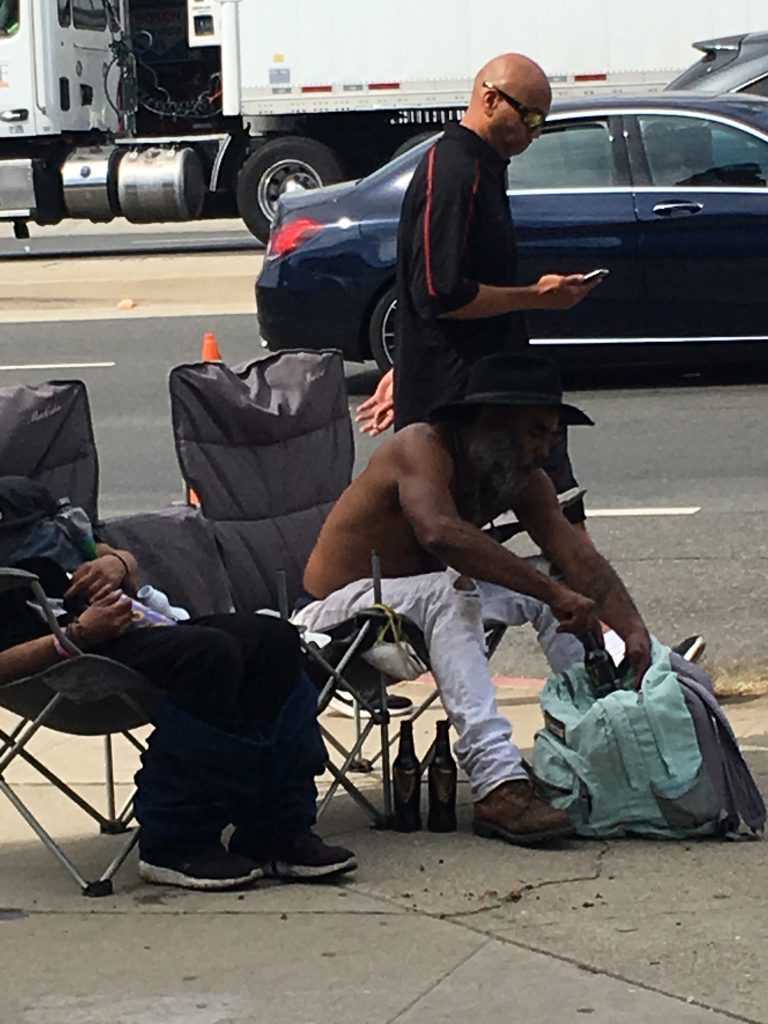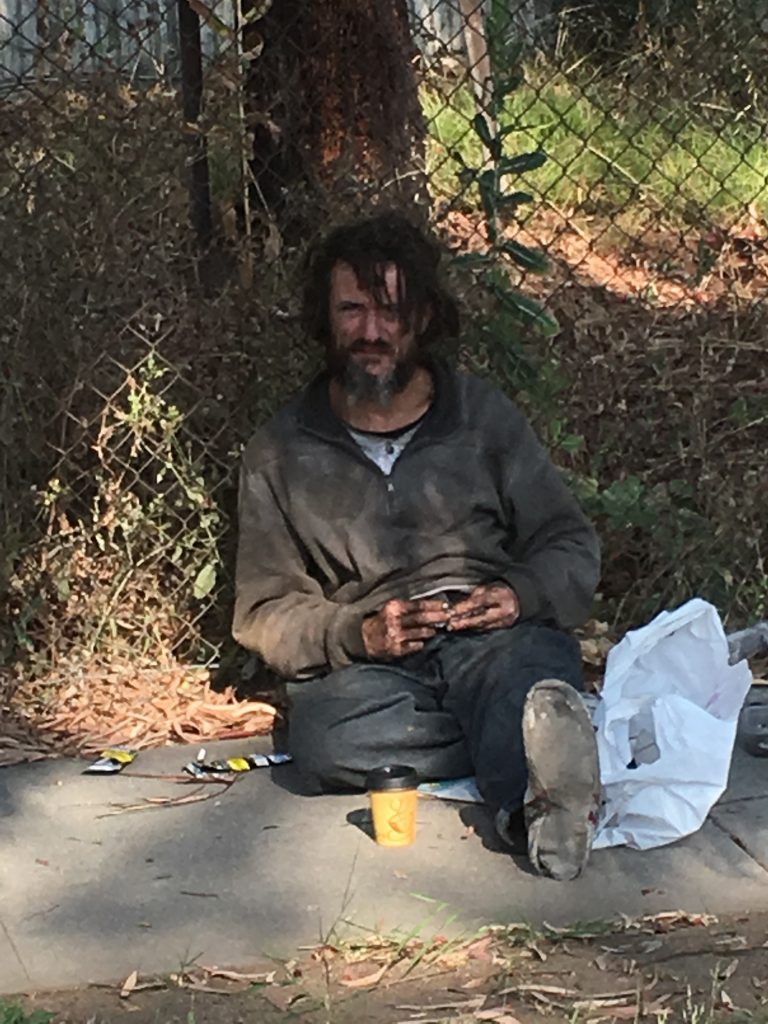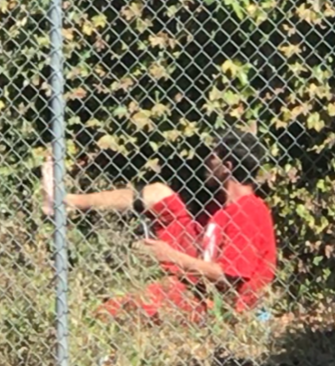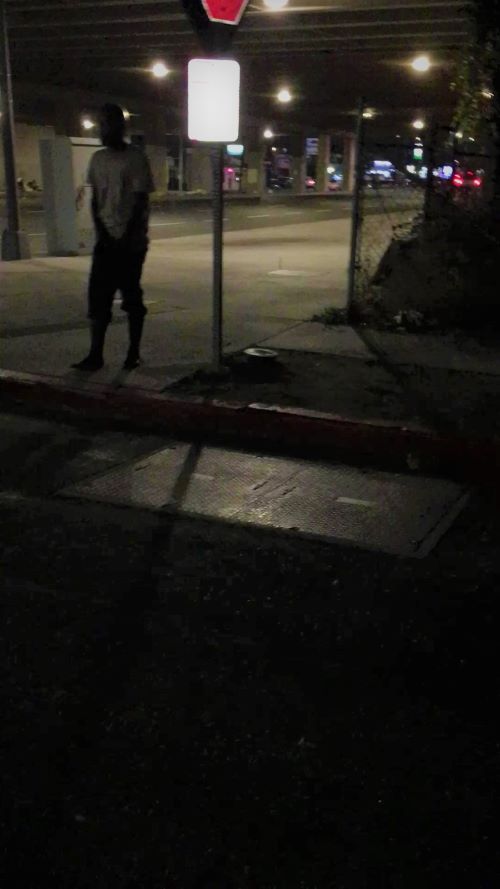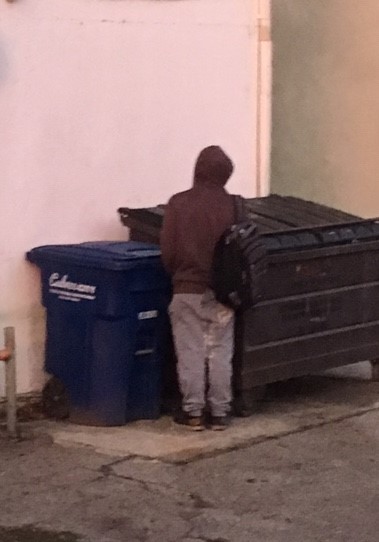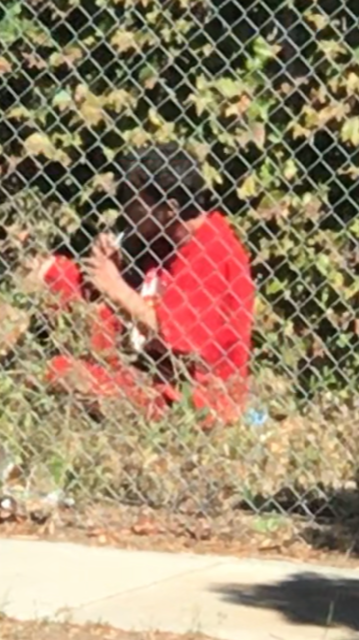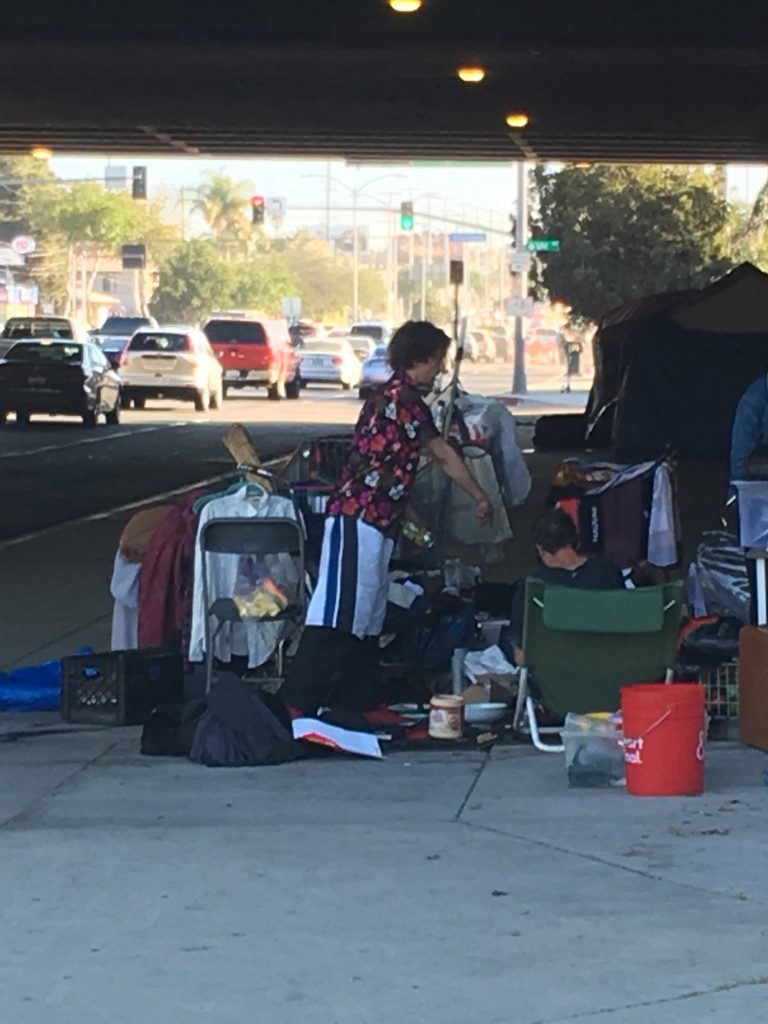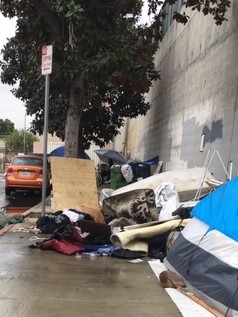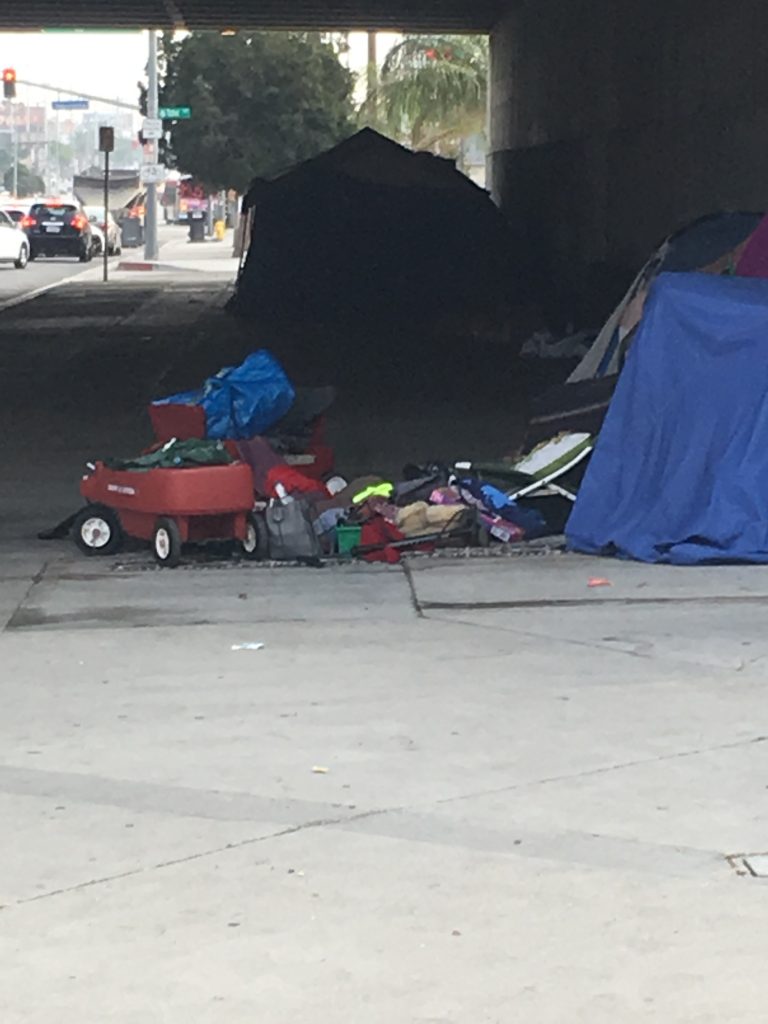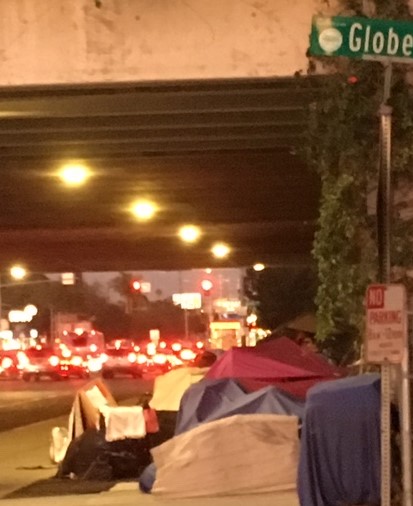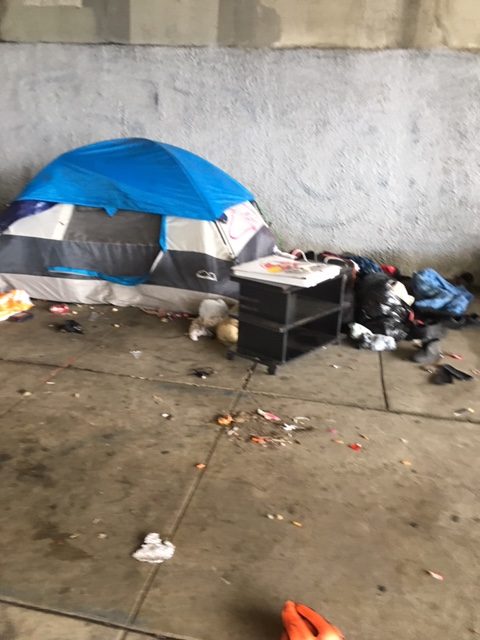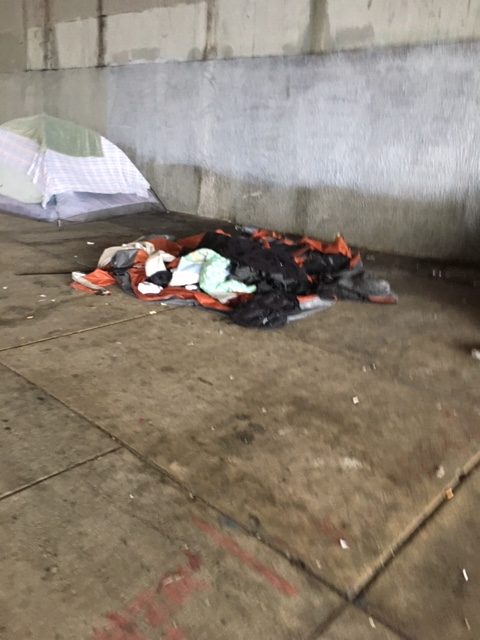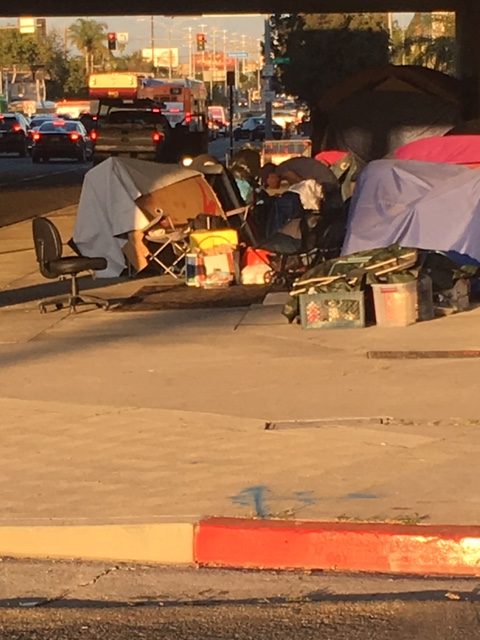While the Mayor, the City Manger, and their small band of privileged, elitist supporters insist we have a “homeless crisis” and lecture us on compassion and morality, we on Globe Avenue have to deal with the consequences of criminal vagrants and the violence they leave in their wake.
They have been at least two previous shootings in the area under siege under the 405 overpass at Venice Boulevard. One in February 2019, the other in July of the same year.
This afternoon, January 11, 2020, there was a third such incident. LAPD received reports of a man with a gun in the area.
For the residents, our first hint of trouble was the low, insistent rumble of a police chopper that sliced through the quiet of a Saturday afternoon. When we went outside—I to drop off books at a nearby library—we were horrified to see yellow crime-scene tape cordoning off our street a few feet before it intersects with Venice and a second one blocking off an alley that leads to Sawtelle.
“There’s been a shooting. Someone has been shot,” the officer I approached informed me as he lifted the crime scene tape for me to pass through.
Out on Venice Boulevard, CCPD’s black-and-white SUVs blocked the eastbound lanes. A police vehicle was parked at the head of Globe where it intersects with Venice on the Culver City side and several more vehicles were parked alongside the vagrant encampments on the Culver City side of the 405 overpass.
Two Culver City Paramedic vehicles passed by, turning left to go north on Sawtelle.
It’s taken several conversations with officers to ascertain what exactly went down.
Was this an officer-involved shooting?
Yes.
Was it the officer doing the shooting?
Yes.
Was it a vagrant who got shot?
Yes.
We understand the vagrant had a gun and thought it a good idea to resist the LAPD.
He thought wrong.
He ended up dead at the Shell Station on the southwest corner of Venice and Sepulveda.
What if he had run down Globe? What if one of us or, God forbid, our children should have been caught in the crossfire? What if any civilians had been injured?
This is why we complain about vagrants camping in such close proximity to us.
They are violent. They are armed—and, no, they’re not just exercising their second-amendment right to keep and bear arms. They are dangerous.
To call this a homeless crisis is an outrage.
I grew up in India. I’ve seen extreme poverty. I’ve seen people living on the streets and in slums. I have even, as a journalism student, visited with such people and spoken with them.
Not one of them was on drugs. Not one of them was violent. Not one of them was armed. Not one of them was encased in filth either. In a country that is hot and humid and without regular access to clean, running water, these people were still able to keep themselves clean and to retain their sense of dignity.
I’ve lived in four different Indian cities, visited quite a few others.
But I have never seen human feces on the streets, never seen people defecating in full view of the public, and never, as I walked through the streets, a lone woman, have I felt unsafe. Even in New Delhi, a notoriously unsafe place for women.
Here in Culver City, I hesitate to walk under the overpass. I would certainly never take my children—ranging in age from 4 through 8—through it to go to the store at the Shell Station or to walk to Vet’s Park as we used to before the bums—I don’t apologize for using that term because that’s all they are—took over our neighborhood.
To call this a homeless crisis is both an outrage and an insult to the residents who live here and are exposed to this situation every day of their lives. To suggest that all that’s needed is a shelter and a few services—and, of course, rent control—flies in the face of common decency.
And even if there really were a housing crisis, the city’s actions—enriching itself and its cronies—would certainly do nothing to alleviate it. The Mayor has said—this in a letter in response to mine—that the city plans on spending $925,000 to study the situation.
Another $190,000 goes to pay the bloated salary of an official who will “coordinate services.”
None of this money goes toward actually providing services that those down on their luck might need—job training, job opportunities, for instance.
Why not? Because the people under the overpass don’t want a job. Nor do they want shelters. What they want is to be able to sell drugs and engage in illegal activities like drug-dealing and prostitution. Yes, we’ve seen this as well in Harry Culver’s city.
And our Mayor living in her privileged bubble is as well aware of this as you or I.
It’s easy to preach compassion when you don’t have to deal with or even see the situation on the outskirts of the city. It’s easy to tell other people what they should or shouldn’t do.
But I’m yet to see any of the people preaching compassion actually walking the walk.
Enabling drug abuse is not compassionate. Enabling young girls to be prostituted is not compassionate. And leaving the mentally ill to fend for themselves out on the streets is not compassionate either.
If anyone wants to preach compassion to the residents of Globe Avenue, let them volunteer to put up the violent, criminal vagrants under the overpass on their street—or better still within their homes.

